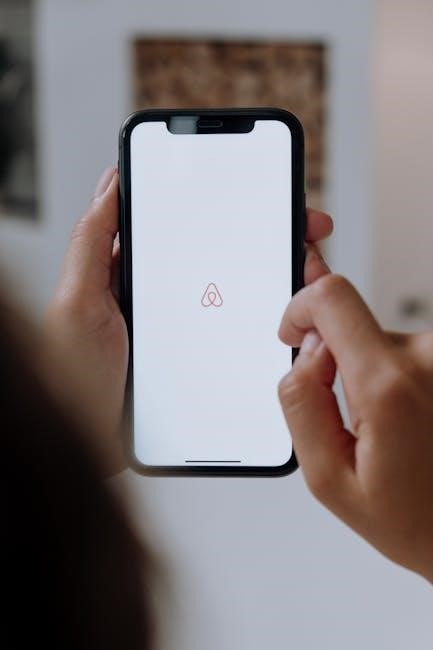Yamaha RX-V675 User Manual: An Overview
The Yamaha RX-V675 is an AV receiver designed to deliver a high-quality audio experience. This overview will guide you through understanding the receiver’s functionality and features. It will help users effectively navigate its settings.
The Yamaha RX-V675 is a 7.2-channel AV receiver designed for home theater enthusiasts. This receiver supports Dolby TrueHD and DTS-HD Master Audio for high-resolution audio decoding. It features a discrete amp configuration, delivering up to 105W of power per channel. All channels are equipped with 192 kHz / 24-bit Burr Brown DACs, ensuring optimized sound imaging with low jitter PLL circuitry.
The RX-V675 offers six HDMI inputs and one HDMI output, supporting 4K pass-through, 4K upscaling, and 3D pass-through. It also includes AirPlay streaming via the AV Controller app and MHL compatibility. The receiver’s intuitive interface and remote control provide ease of use. Yamaha’s Cinema DSP 3D technology delivers an immersive audio experience.
This manual provides comprehensive guidance on setting up, operating, and troubleshooting the RX-V675. It covers initial connections, audio configurations, input selection, multi-zone audio setup, and solutions to common issues. By following this guide, users can maximize the performance and enjoy the full potential of their Yamaha RX-V675.
Key Features and Specifications
The Yamaha RX-V675 boasts several key features that enhance its performance and versatility. It supports 7.2 channels, providing immersive surround sound with Dolby TrueHD and DTS-HD Master Audio decoding. The receiver delivers 90 watts per channel into 8 ohms (stereo), ensuring powerful and clear audio output.
Connectivity options include six HDMI inputs and one HDMI output, supporting 4K pass-through, 3D pass-through, and Audio Return Channel (ARC). It also features component and composite video inputs, along with digital audio inputs (optical and coaxial). The RX-V675 supports AirPlay for wireless audio streaming and MHL for mobile device connectivity.
Additional specifications include a built-in AM/FM tuner with 40 preset stations, a USB port for audio playback, and Yamaha’s proprietary Cinema DSP 3D technology. The receiver’s dimensions are 435mm (width) x 171mm (height) x 364mm (depth), and it weighs 10 kg. These features and specifications make the RX-V675 a robust and versatile choice for home theater setups.

Setting Up Your RX-V675
Setting up your Yamaha RX-V675 involves connecting your devices and configuring the audio settings for optimal performance. This section will guide you through the initial setup and audio configuration process.
Initial Setup and Connections
Begin by unpacking your Yamaha RX-V675 and ensuring all components are present. Refer to the included safety brochure before proceeding. Position the receiver in a well-ventilated area, away from excessive heat or moisture; Next, connect your speakers using appropriate speaker wire, ensuring correct polarity (+/-) for each connection.
Connect your source devices, such as Blu-ray players, gaming consoles, or streaming devices, to the receiver’s HDMI inputs. Utilize HDMI cables for optimal audio and video quality. Connect an HDMI cable from the receiver’s output to your TV or projector. For devices without HDMI, use component or composite video connections along with analog audio cables.
Connect the provided FM and AM antennas to their respective terminals. Plug the receiver into a power outlet. Turn on the receiver and your display. Follow the on-screen setup guide to configure basic settings, such as language, speaker configuration, and network settings, if applicable.
Configuring Audio Settings
Access the Yamaha RX-V675’s menu to customize audio settings for an optimal listening experience. Navigate to the “Sound” or “Audio” menu. Here, you can adjust speaker levels to balance the sound output from each speaker. Use the test tone feature to ensure each speaker is properly connected and functioning.
Explore the various sound modes, such as Dolby TrueHD and DTS-HD Master Audio, for immersive surround sound. Experiment with Cinema DSP 3D modes to simulate different acoustic environments. Enable dialogue enhancement to improve the clarity of vocals in movies and TV shows. Adjust the subwoofer level to fine-tune the bass response.
Utilize the equalizer settings to customize the frequency response to your preferences. Consider using YPAO (Yamaha Parametric Room Acoustic Optimizer) for automatic speaker calibration. Save your preferred settings as custom presets for easy access.

Operating the RX-V675
Operating the RX-V675 involves understanding input selection, device control, and multi-zone audio capabilities. This section guides you through effectively using these features to maximize your home theater experience.
Input Selection and Device Control
To begin operating your Yamaha RX-V675, understanding input selection is crucial. Connect your devices to the receiver using HDMI or audio input connections located on the back panel. These devices can include Blu-ray players, gaming consoles, and streaming devices. Next, use the receiver’s input selector to choose the desired source.
Device control can be managed either with the remotes of the connected devices, or through HDMI-CEC functionality. This enables unified control via the receiver’s remote. This streamlines the user experience and simplifies managing multiple devices. Ensure that HDMI-CEC is enabled in both the receiver and connected devices for optimal functionality.
Proper configuration of input selection and device control allows for seamless switching between different entertainment sources, enhancing your overall enjoyment of your home theater system.
Utilizing Multi-Zone Audio
The Yamaha RX-V675 supports multi-zone audio, allowing you to enjoy music in different rooms simultaneously. To set up this feature, connect additional speakers to the designated Zone 2 speaker terminals on the receiver’s rear panel. Ensure that the speakers are compatible with the receiver’s power output.
Next, navigate to the receiver’s settings menu and configure the Zone 2 settings. This involves assigning an audio source to Zone 2, such as a separate input or a network streaming service. You can then control the volume and playback in Zone 2 independently from the main zone using the receiver’s remote or the Yamaha AV Controller app.

Setting up multi-zone audio offers the flexibility to enjoy different audio experiences in various areas of your home, enhancing the overall entertainment possibilities of your audio system.

Troubleshooting Common Issues
This section addresses common issues encountered while using the Yamaha RX-V675. It provides guidance on resolving problems like connectivity issues, audio distortion, or lack of sound. These troubleshooting steps will help ensure optimal performance.
Common Problems and Solutions
Encountering issues with your Yamaha RX-V675 is not uncommon, but many problems have straightforward solutions. One frequent issue is the absence of sound. First, ensure that all speaker connections are secure and correctly placed. Verify that the input source selected on the receiver matches the device you’re using.
Another prevalent problem is distorted audio. Check speaker wires for damage and ensure they’re not touching each other. Adjust the receiver’s sound settings, such as equalizer levels, to eliminate distortion. If you experience connectivity issues, such as HDMI problems, try different cables or ports.
If the receiver is unresponsive, try power cycling it by unplugging it for a few minutes. If these basic steps don’t resolve the issue, consult the owner’s manual or Yamaha support for more specific troubleshooting guidance. Regularly updating the receiver’s firmware can also prevent many common problems.
Firmware Updates and Support
Keeping your Yamaha RX-V675 firmware up to date is crucial for optimal performance and resolving potential issues. Firmware updates often include bug fixes, performance enhancements, and compatibility improvements. To check for updates, navigate to the receiver’s settings menu and look for the firmware update option.
Before initiating an update, ensure you have a stable internet connection. Follow the on-screen instructions carefully during the update process to avoid interruptions. If you encounter problems during the update, consult the Yamaha support website for troubleshooting steps. Yamaha provides comprehensive support resources, including FAQs, manuals, and contact information for customer service.
If you need further assistance, consider contacting a professional technician. Regular maintenance and timely firmware updates can significantly extend the lifespan and improve the functionality of your Yamaha RX-V675.